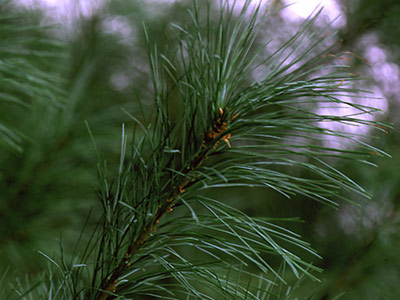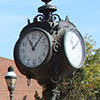Plant Systematics : Gymnosperms
The Gymnosperms are characterized by a more primitive means of reproduction than the flowering plants (angiosperms). While gymnosperms have a seed coat, they lack a fruiting structure and a true flower, providing less protection for the developing embryo than flowering plants.

A Gymnosperm, Pinus.
Conifers, cycads, and the bizarre gnetophytes comprise the major groups of gymnosperms. Ginkgo tree, which is often grown for ornamental qualities, is also a gymnosperm. The most abundant gymnosperms in our area are the conifers. Conifers are the common evergreen trees and shrubs such as pine, juniper, spruce, and arborvitae.
Gymnosperms are ancient plants, yet still remain abundant. The evolutionary advantages of flowers and fruit have lead angiosperms to replace gymnosperms as the primary vegetation on the earth. Gymnosperms have a survival advantage over angiosperms only in extremely cold or dry conditions. This ability to survive cold or dry weather is due to a thick wax cuticle on the needles of conifers, which prevents dehydration through evaporative loss. For this reason, conifers replace deciduous trees as one moves toward the poles. Gnetophytes are often found growing in deserts where few other plants can survive.





